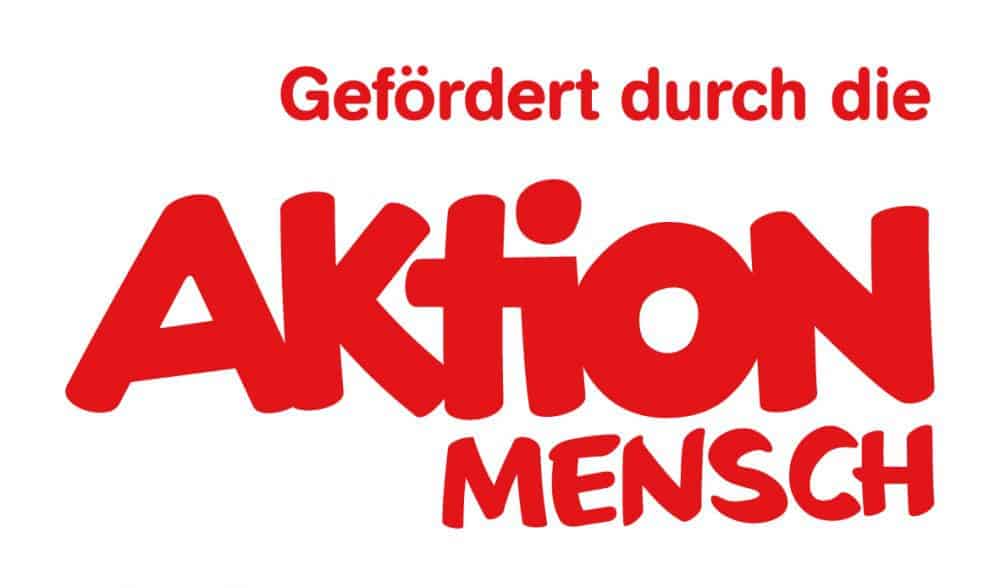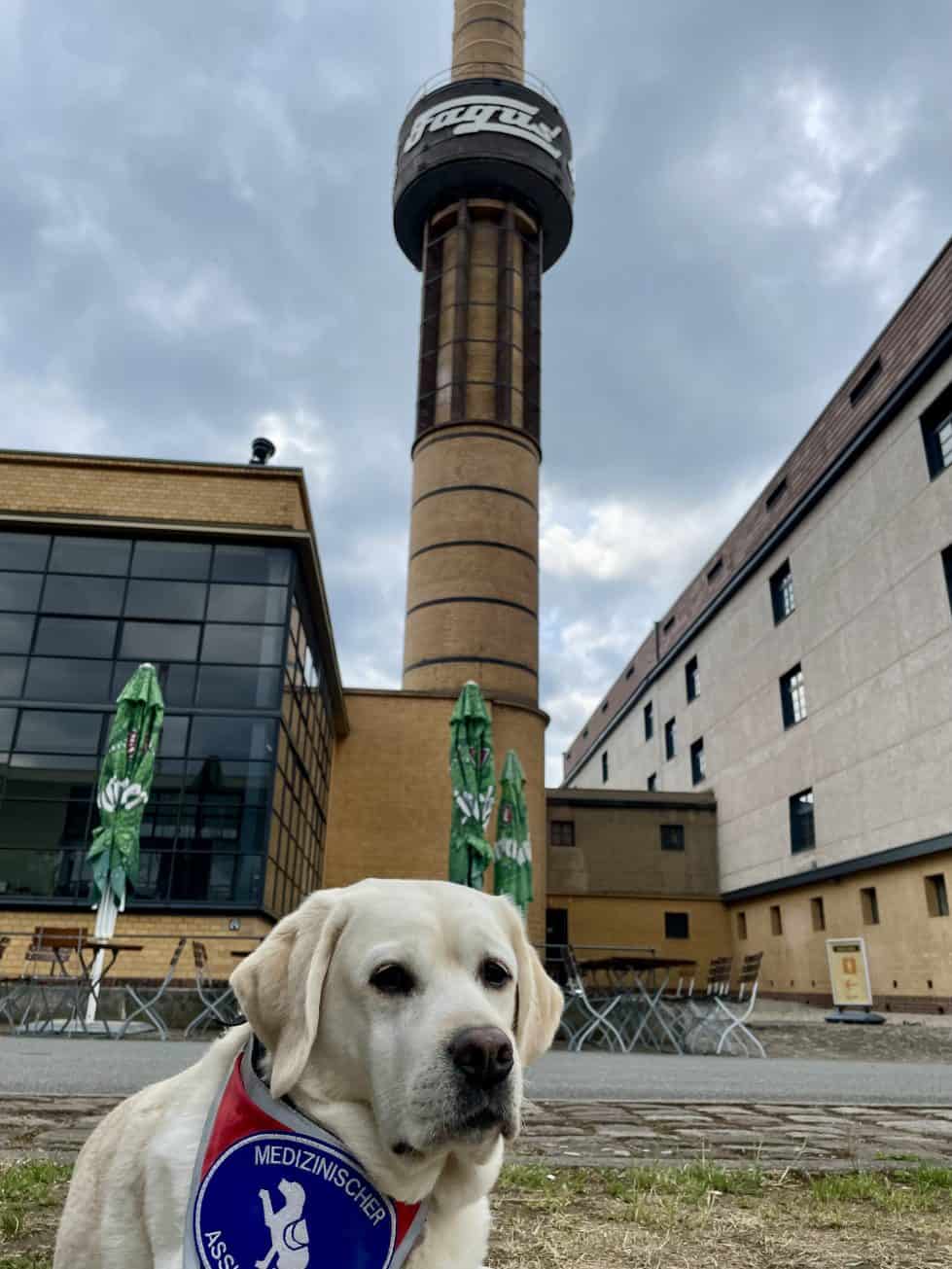The shoe last factory near Alfeld is a World Heritage Site AND a production site, a living monument. That in itself is a special feature. Assistance dog Masha’s worried look gives away the fact that visitors with assistance dogs face special, monument-related challenges here. Okay, it was also starting to drizzle and Masha, like many Labradors who love to bathe, hates water from above. Let’s not even talk about the thunderstorm air.
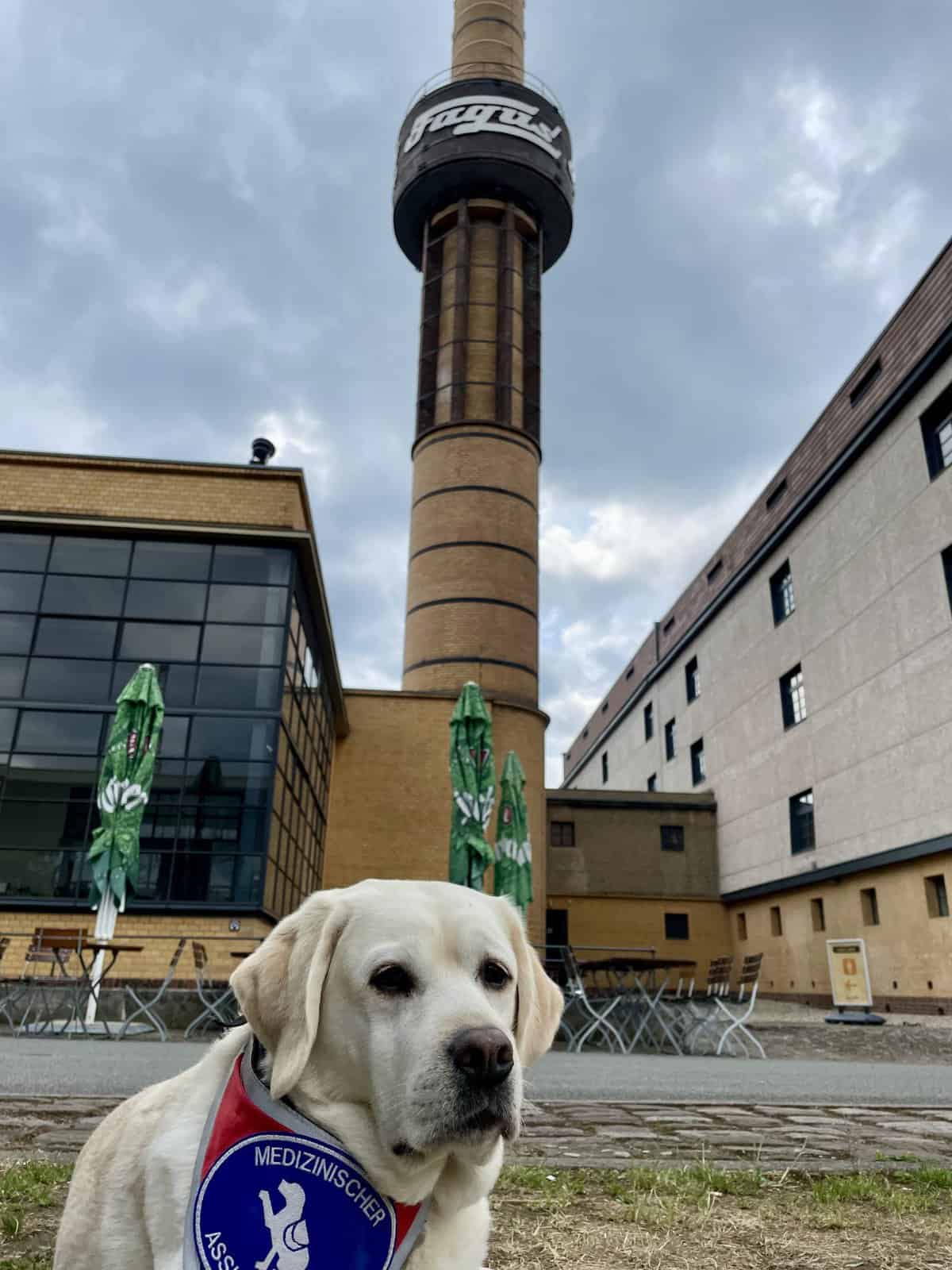
The factory once marked a turning point in industrial architecture, an external change that also made a new, more appreciative view of the worker visible. Bauhaus fans will absolutely get their money’s worth here. Walter Gropius himself was commissioned by company owner Carl Benscheidt to plan and build the shoe last factory in 1911.
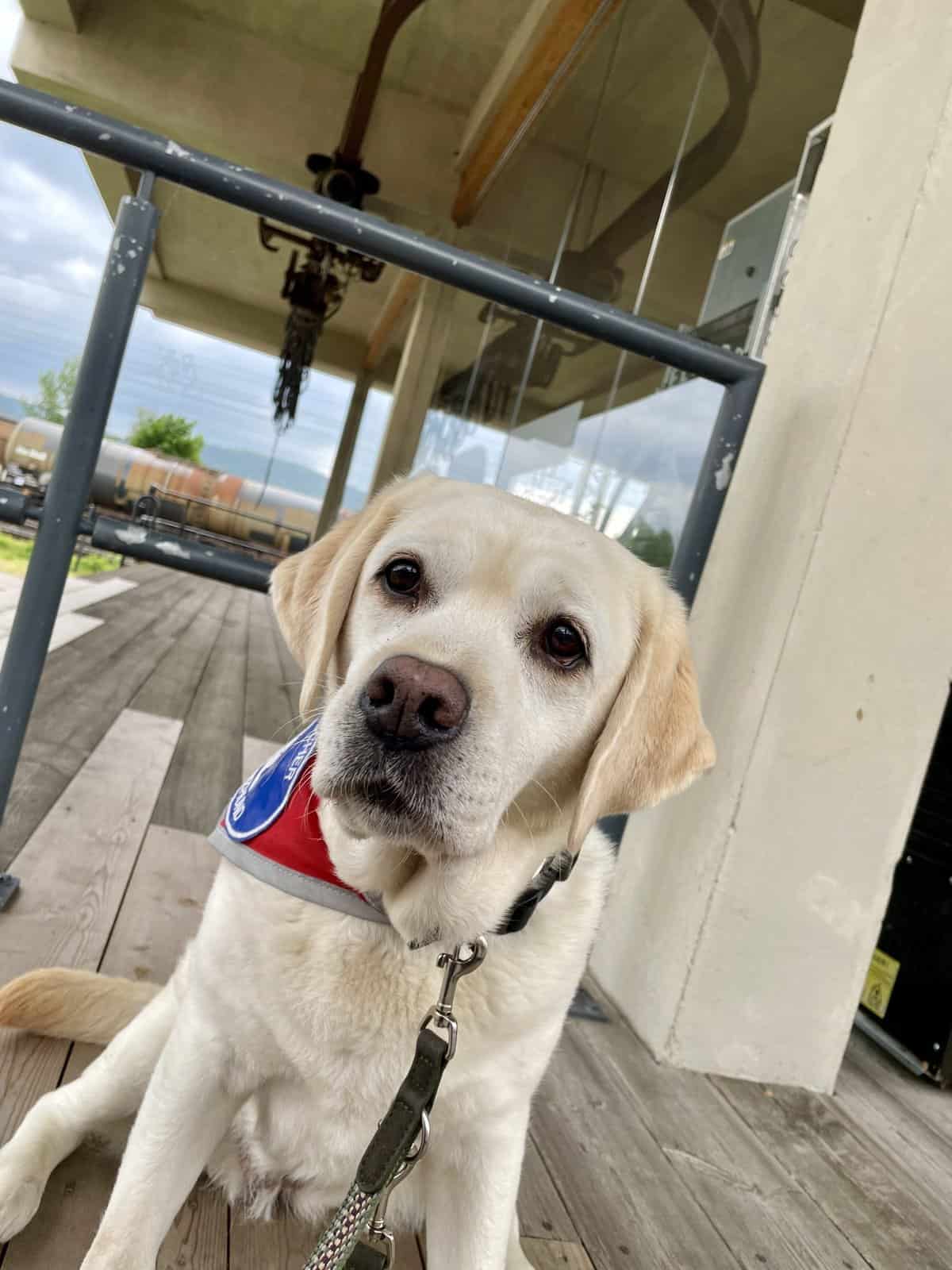
Light, air, glass, lightness and transparency replaced the monumental industrial architecture. The seemingly floating glass corners of buildings are no longer a rare sight for our eyes. Back then, that was brave and strange. But we don’t want to give too much away. This World Heritage Site is definitely worth a visit. We are delighted that, thanks to “Aktion Mensch”, we are able to open up this interesting object for human-assistance dog teams.
We discussed the topic of assistance dogs with our charming companion Hanna Wirth. We learned about the difficulties of the office dog project and sensed that the “dog” issue is a bit loaded. It was good that we were able to calmly explain what assistance dogs are and also that there is a legal basis for carrying them.
We were met in a very friendly manner everywhere on the site. The Fagus plant is still in production. During the lunch break, we met some employees. We were also welcome guests in the cafeteria with the assistance dogs.
In the museum, we went up with Ms. Wirth in an original elevator to see what she had already identified as a difficulty. The building had wooden floors with large gaps. This served to ventilate the beech wood during the drying process. Some dog paws fit completely into the irregular gaps. The interactive museum is therefore only recommended to a very limited extent with an assistance dog and only for sighted people. Even a normal wheelchair has to be exchanged for one with thick tires, which is provided. So if you use an active wheelchair with a drive, you also have a barrier. He needs an accompanying person to push him. One solution for assistance dogs could be a small trolley, but maneuvering it between the exhibits should be approached calmly.
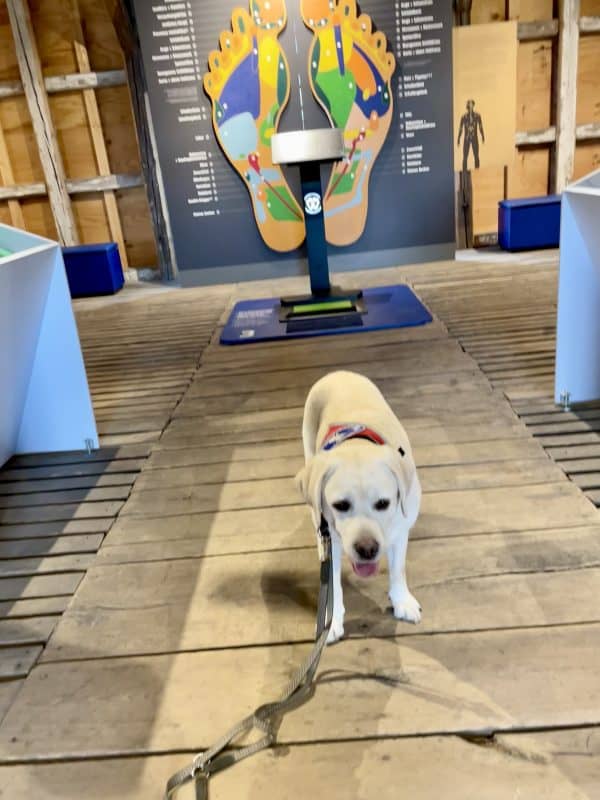
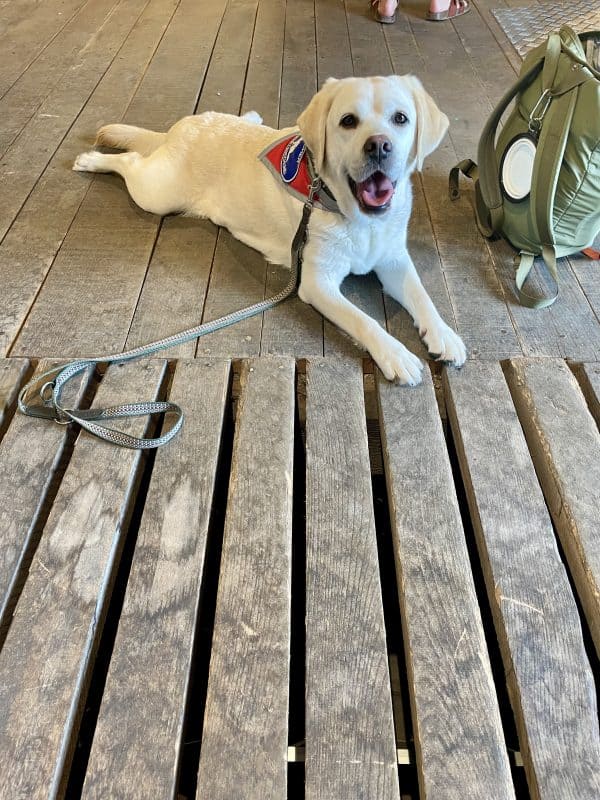
Our recommendation: Get the audio guide at the museum (deaf people with assistance dogs need an interpreter). It is well done and leads across the grounds and partly into the building. Families could go to the museum if someone waits with the assistance dog in the middle of the floor without large gaps. The exhibition is really great for children. We would not put down alert and warning dogs. If an emergency situation arises and the assistance dog comes to the rescue, it could step into a crevice.
We also found a claw-killer staircase on the site. Walk carefully, then you can safely enter the exhibition rooms.
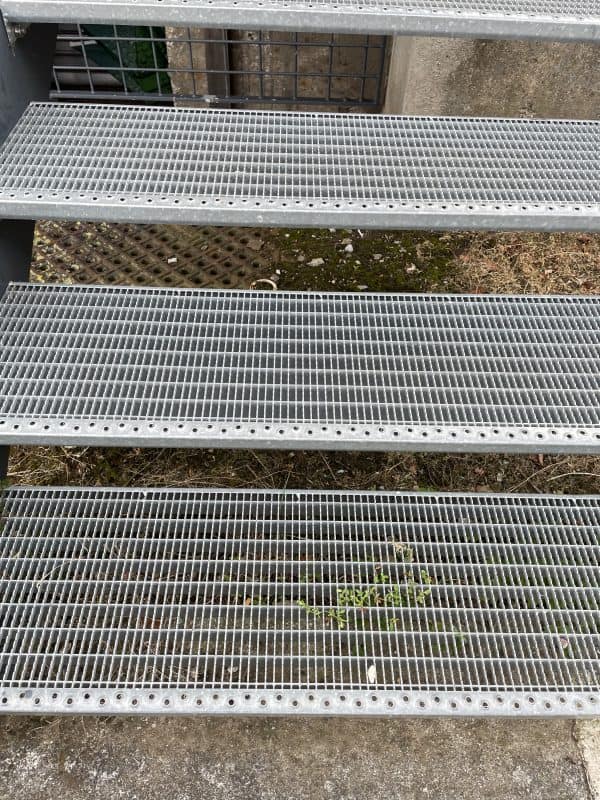
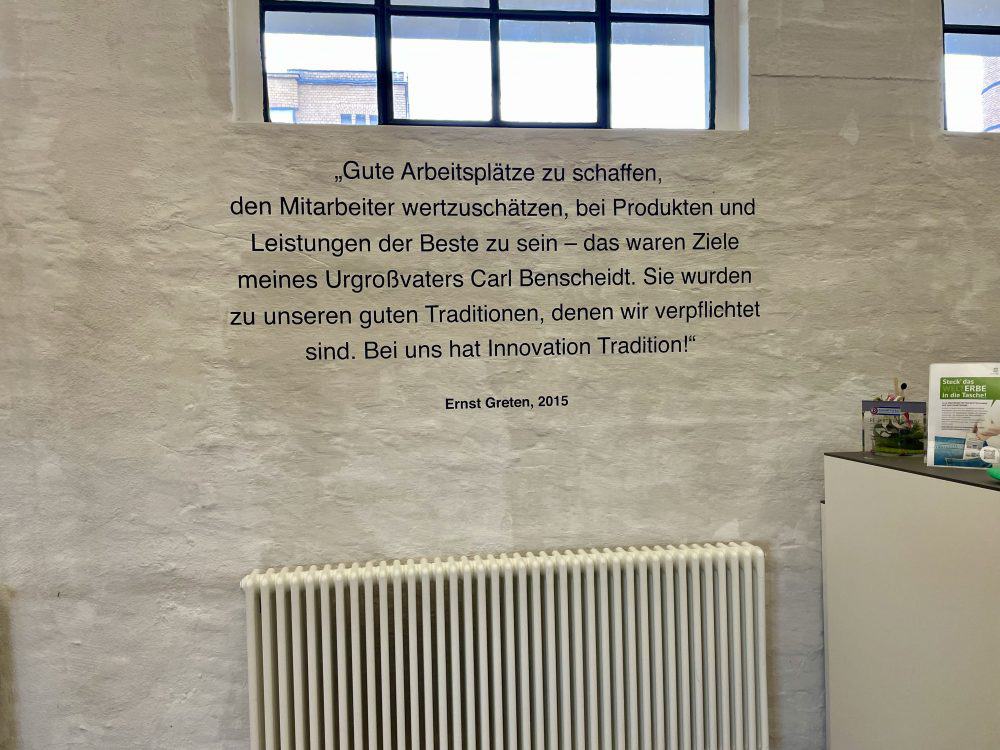
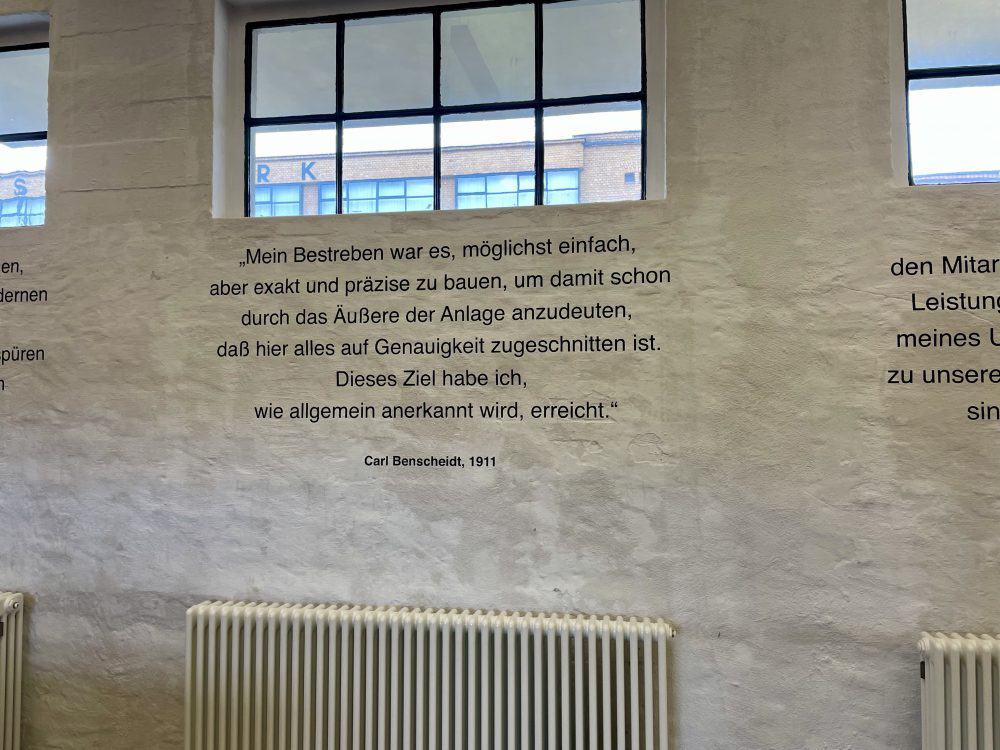
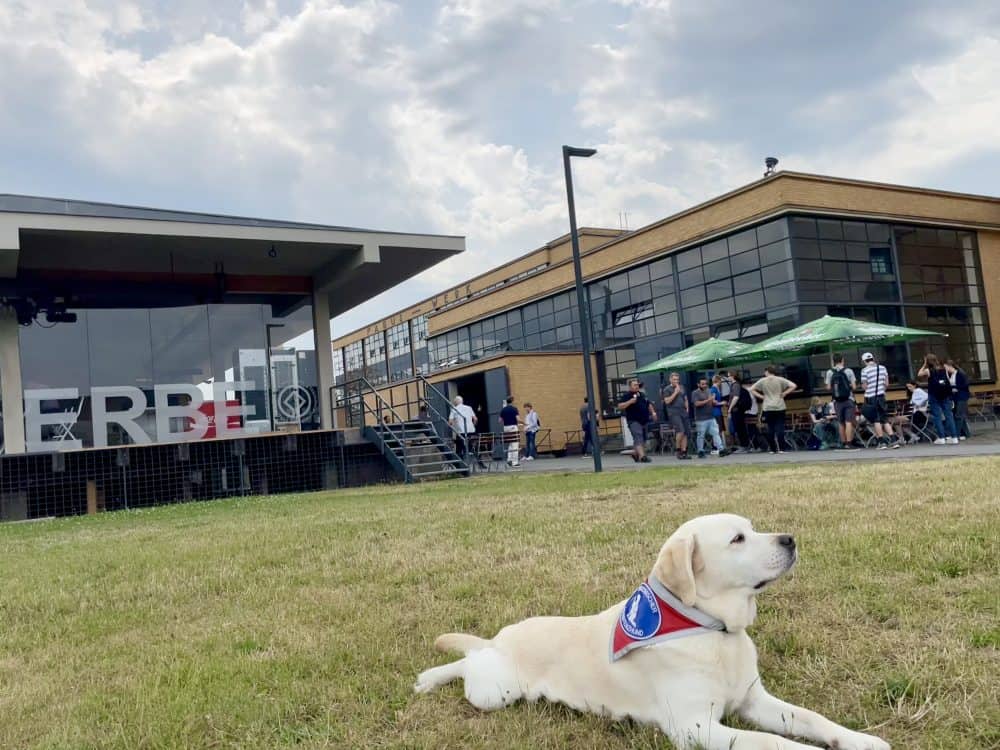
The sentence on assistance dogs is still missing from the World Heritage Site’s accessibility page, but we are confident that it will be added soon.
The “Assistance dog-friendly municipality” campaign was made possible by funding from Aktion Mensch.
